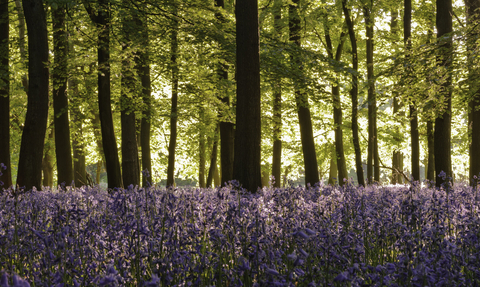
WildNet - Andrew Mason
Staffordshire in Spring
Spring is usually said to start at the beginning of March, and the 21st of March is the Spring Equinox, the date on which day and night are of equal length. This season is when days get longer, and the spring sunshine brings growth and greenery. Birdsong reaches a peak, and many flowers appear, attracting insects, including bees and butterflies.
We await this time of year to immerse ourselves in a carpet of bluebells that overtake our woodlands and the golden trumpets of daffodils appearing in our fields and road verges.
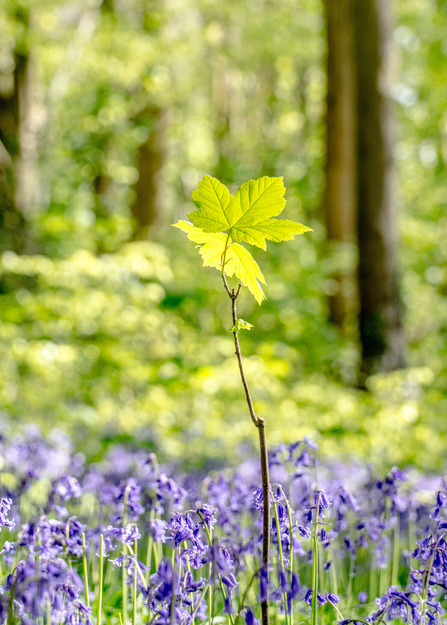
Josh Raper -bluebells - Josh Raper / Conservation Media
Bird's in Spring
We wave goodbye to our thrushes, such as redwings, fieldfares and mistle thrushes, as they have picked the berry trees clean and are heading back to Russia or Scandinavia for Spring and Summer. But as we are warming up in Spring, we expect a whole foray of birds to appear ready for Summer. We can expect to see these birds spread across Staffordshire, from our lakes and reservoirs to our gardens and nature reserves.
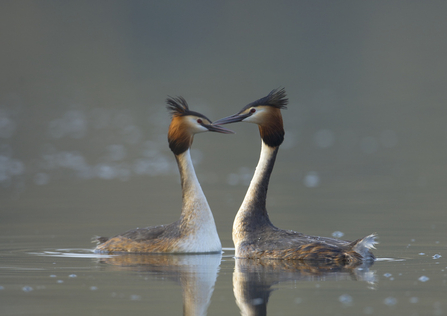
Great crested grebes © Andrew Parkinson/2020VISION
Love is in the air! A spectacle to see on our lakes and reservoirs this Spring. The great crested grebe mating ritual is made up of two stages, firstly great crested grebes are monogamous for the year and can be seen performing the first half of the ritual as early as January! The first display is centred on strengthening the pair bond, and a number of distinct behaviours are recognised. The head-shaking display is probably the most familiar; in this, the head plumage is fanned into a ruff before the birds then face each other and shake their heads from side to side.
The most elaborate of the great-crested grebe’s displays is the ‘weed ceremony’ which, as its name suggests, takes place just before the pair begin to build their nest platform. As part of this ceremony the two birds make a slow and deliberate dive to collect weed, before returning to the water’s surface and swimming towards each other, their heads held low to the surface. As they meet, the birds rise from the water and stand almost fully upright while treading water, an amazing sight to see!
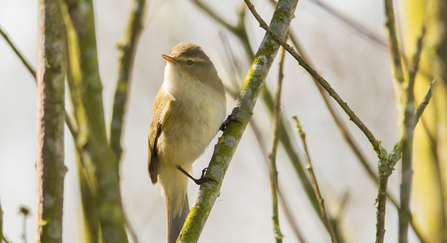
WildNet - Janet Packham Photography
A bird that normally arrives in early March but every year we have more and more reports of chiffchaffs overwintering in the UK. They arrive in March from the Mediterranean and western Africa and the males often arrive up to 3 weeks earlier in preparation for the breeding season in Summer and are often one of the last migratory birds to leave in September.
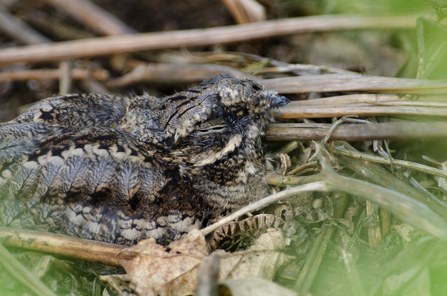
© David Tipling/2020VISION
Earlier than you thought? Another visitor most often heard during those warm nights at dusk but arrives here in April from Africa!
The nocturnal nightjar is one of our strangest birds. A wide-mouthed, insect-eating visitor to heathlands and young conifer plantations, they spend their days sitting on the floor, where they nest. Cryptically camouflaged in greys and browns, they look just like a fallen log and are almost impossible to spot during the day. But at dusk, a strange sound starts up: a mechanical whirring, almost like a distant engine, and just as the darkness arrives, the nightjar appears.
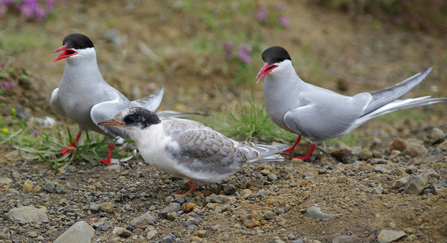
Arctic terns © Gillian Day
Arctic terns have one of the longest migrations of any bird: arriving in Spring, they breed in the Arctic and the UK during summer and travel all the way to the Antarctic for the winter. Their journey ranges from 44,000 miles to 59,000 miles per year – the longest migration recorded for any animal. Red-listed species we are doing as much as possible in Staffordshire by installing tern rafts; artificial rafts for terns to nest on with the benefit of raising and falling with floods. These can be seen in a few of our reservoirs and our reserves.
Mammals in Spring
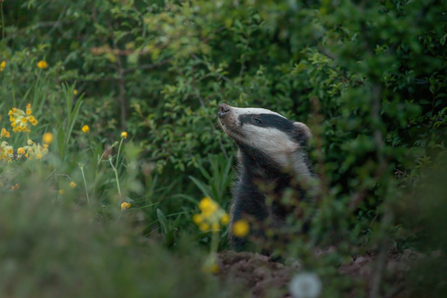
@TOM.ELLIS
We can expect all the wildlife that fattened up for winter to be up and out in spring, foraging for food and looking to mate. Badgers are a perfect example, after spending winter mostly in their setts; occasionally leaving to forage for food, they will be out every night and possibly feeding cubs born in January or February. This is also when badger deaths on roads are at their highest; with milder weather and more abundance of food, badgers will be travelling further and crossing roads in search of food.
Come April, we can expect the cubs to be exploring the full extent of the sett and tempted outside by the new scents and sounds. May is the best time to see badgers in daylight as they will be emerging in daylight, and the sow will be taking her cubs out of the sett to explore and play with the other cubs from the clan.
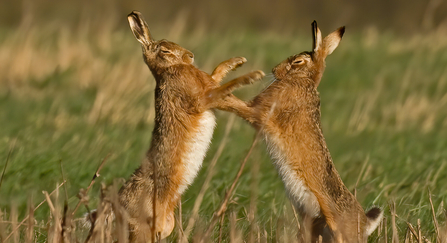
boxing hares - Russell Savory
Mad March hares! Did you know it's a female and a male often caught up in a boxing match? In Spring, males can be seen chasing females across fields; the females get quite tired of this and instigate the fight themselves to fend off the males with their mating urges. Places to see boxing hares are open grassy or arable fields, particularly near woodland fringes or decent hedgerows where the hares can find shelter. Outside the boxing season, you are best taking your binoculars to carefully scan the area, as hares spend much of their time hunkered down in a depression they have dug in the ground called a ‘form’.
Emerging in Spring.
Bluebells usually flower from late March to early May, but it does vary from year to year. They are one of the last spring flowers to bloom before the woodland canopy closes up and new leaves block out the sunlight. If spring is mild, bluebells respond by flowering earlier.
Bluebells are traditionally woodland flowers; they can grow very close together, which creates a beautiful sea of bluebells. They prefer the rich, undisturbed soils of long-established woods, so you're most likely to see them in old and ancient woodland. You might also spot them growing along hedgerows and in fields and gardens.
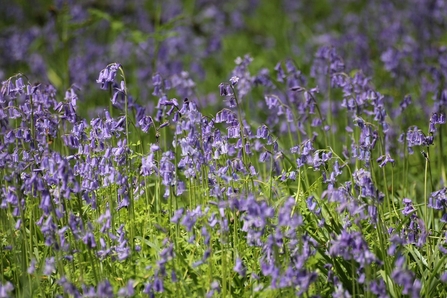
Frogspawn can be found in ponds around the UK in late January, February and March and is a fascinating wildlife experience to witness.
If you have space to create even a small garden pond, it can be a potential home for spawning frogs and toads, and it is a fun activity to visit each day to see how your garden spawn is developing. Once the tiny tadpole has hatched, it takes them around 14 weeks to become a frog and slightly longer for toad tadpoles.
The final stage before the tadpole becomes a frog or toad takes approximately a day. They quickly take cover to protect themselves from predators, such as birds of prey, snakes, badgers and otters.








